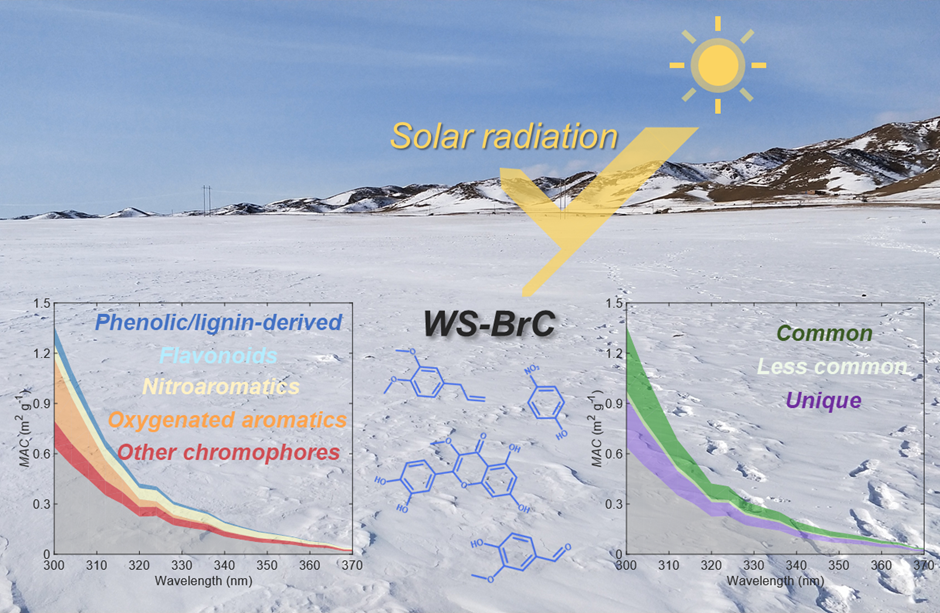Chemical characterization of brown carbon deposits in snowpack
Submitter
Laskin, Alexander — Purdue University
Area of research
Surface Properties
Journal Reference
Science
Chemical composition of individual brown carbon (BrC) chromophores in snowpack samples was investigated and components-specific absorption properties of the snowpack were quantified.
Impact
This study provided a comprehensive report on various types of BrC components in midlatitude seasonal snowpack, including their chemical identifications, light absorption contributions, and potential sources, which fill the gap in our knowledge of “unknown” chromophores in snow.
Summary
This study reports chemical characterization of brown carbon (BrC) components identified in six snowpack samples collected from northern Xinjiang, China. The chromophores were classified into five major types: (1) phenolic/lignin-derived compounds, (2) flavonoids, (3) nitroaromatics, (4) oxygenated aromatics, and (5) other chromophores. Identified chromophores account for ∼23−64% of the total light absorption in the wavelength range of 300−370 nm. In the representative samples from urban and remote areas, oxygenated aromatics and nitroaromatics dominate the absorption in the wavelengths below and above 320 nm, respectively. The highly polluted urban sample shows the most complex composition and other chromophores contribute to the bulk absorption. Phenolic/lignin-derived compounds are the most light-absorbing species in the soil-influenced sample. Chromophores in two remote samples exhibit ultraviolet-visible features distinct from other samples, which are attributed to flavonoids. Identification of individual chromophores and quantitative analysis of their optical properties are helpful for elucidating the roles of BrC in snow radiative balance and photochemistry.


